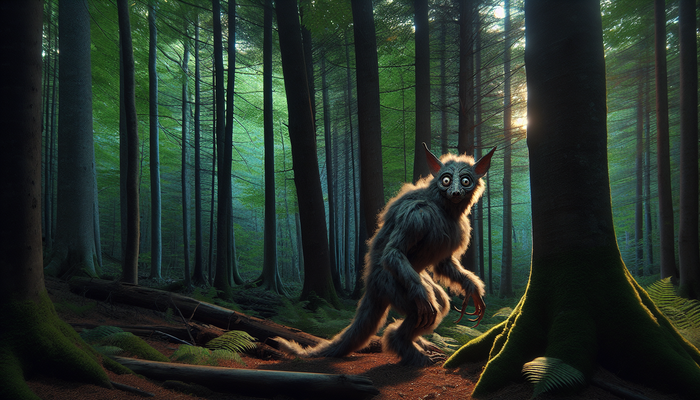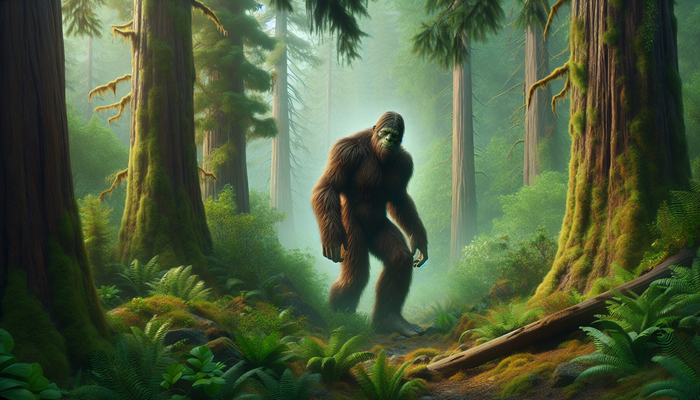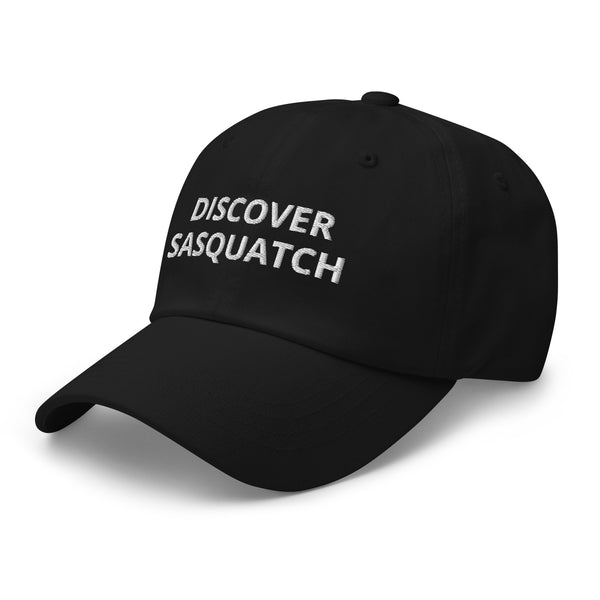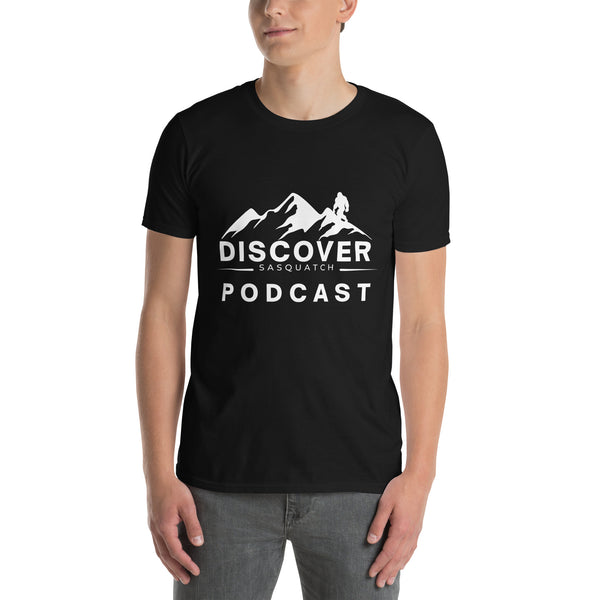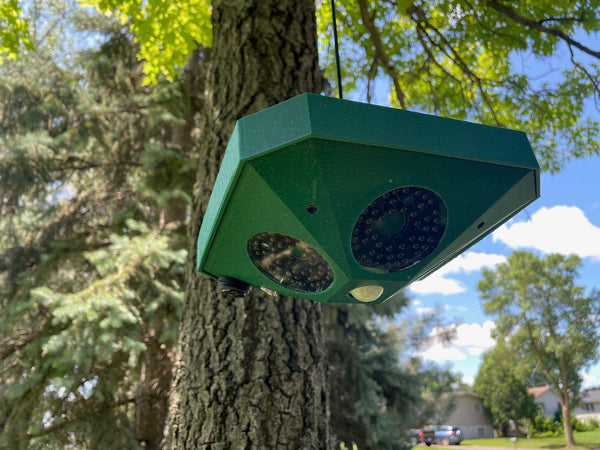Exploring Famous Cryptid Hoaxes That Captivated the World
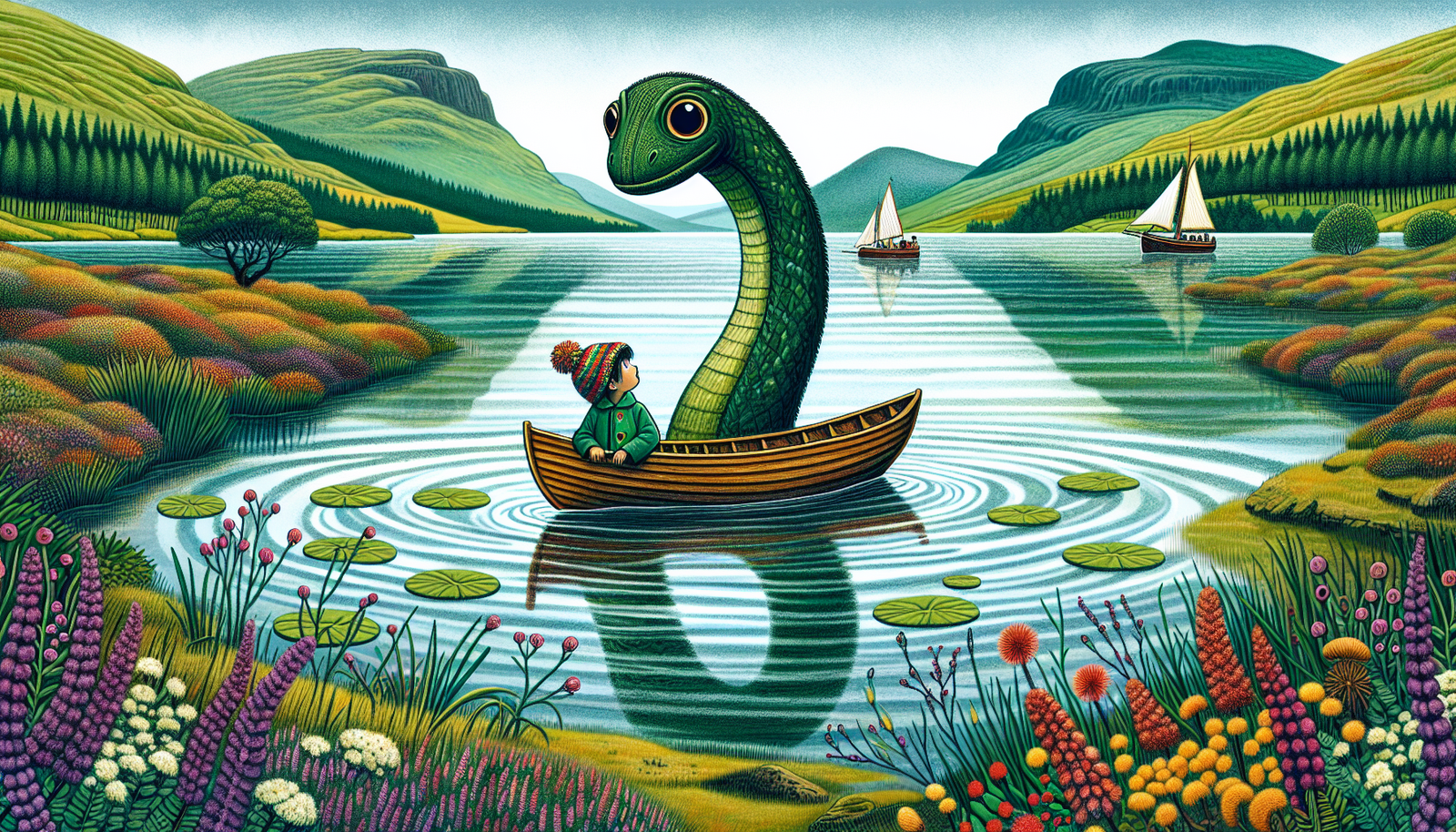
By Jack Sullivan, Cryptozoologist
The world of cryptids is a realm where mystery and imagination collide, captivating the human psyche with tales of elusive creatures that lurk just beyond the edge of scientific discovery. From the towering figure of Bigfoot stalking through misty forests to the sinuous form of the Loch Ness Monster gliding beneath dark waters, these legendary beasts have become fixtures in our cultural landscape. But beneath the veneer of wonder lies a complex tapestry of belief, deception, and the enduring human desire to find magic in the mundane.
As we peel back the layers of cryptid lore, we find a fascinating interplay between genuine mystery and elaborate hoaxes that have shaped public perception for generations. These fabrications, far from being mere pranks, have often taken on lives of their own, becoming integral parts of local folklore and even influencing scientific discourse. They serve as a mirror to our society, reflecting our fears, hopes, and the eternal quest for something beyond the ordinary.
In this exploration, we'll dive deep into the murky waters of cryptozoology, examining some of the most infamous hoaxes that have captivated the world. We'll unravel the threads of deception, analyze the motivations behind these elaborate ruses, and consider their lasting impact on our collective imagination. From the iconic image of the Loch Ness Monster to the footprints of Bigfoot, we'll traverse the globe in search of the truth behind these legendary fakes.
The Foundation of Cryptozoology
Before we embark on this journey through the annals of cryptid hoaxes, it's crucial to understand the foundation upon which these tales are built. Cryptozoology, the study of hidden animals, occupies a unique space between science and folklore. It's a field that has drawn both fascination and skepticism, fueled by tantalizing glimpses of the unknown and the human propensity for storytelling.
The term "cryptid" itself is relatively new, coined in 1983 by cryptozoologist J. E. Wall. It refers to animals whose existence is unproven by science but supported by eyewitness accounts, folklore, or other forms of evidence. These creatures range from the plausible—like lake monsters that could be undiscovered species of fish—to the fantastical, such as humanoid beasts that seem to defy biological possibility.
Cryptozoology has its roots in the work of zoologists like Bernard Heuvelmans and Ivan T. Sanderson, who sought to apply scientific rigor to the investigation of unknown animals. However, the field has often been criticized for its lack of empirical evidence and its reliance on anecdotal accounts. This tension between scientific skepticism and the allure of the unknown has created fertile ground for hoaxers to ply their trade.
The Cultural Impact of Cryptids
The cultural impact of cryptids cannot be overstated. They've inspired countless books, movies, and television shows, becoming a part of our shared mythology. Local economies have flourished on cryptid tourism, with towns embracing their mysterious residents as mascots and attractions. The search for these creatures has even influenced conservation efforts, as the possibility of undiscovered species highlights the importance of preserving natural habitats.
But for every genuine mystery, there are those who seek to exploit our fascination with the unknown. Hoaxers have long recognized the power of cryptid stories to capture the public imagination—and sometimes, their wallets. These fabrications range from simple misidentifications blown out of proportion to elaborate schemes involving faked evidence and coordinated deception.
As we examine these hoaxes, we'll see how they've evolved alongside technology and media. From crude photographs and plaster casts to sophisticated digital manipulation, the tools of deception have become more advanced. Yet the basic human desire to believe in something extraordinary remains constant.
The Surgeon's Photo: The Loch Ness Monster's Most Infamous Portrait
No discussion of cryptid hoaxes would be complete without delving into the murky depths of Loch Ness and the infamous "Surgeon's Photo." This single image, purportedly capturing the sinuous neck of the legendary Nessie rising from the waters, has become an icon of cryptozoology and a masterclass in the power of suggestion.
The Origin of the Photograph
The story begins in April 1934, when a respected London gynecologist, Robert Kenneth Wilson, claimed to have snapped a photograph of something strange in Loch Ness. The image, published in the Daily Mail, showed what appeared to be a long, serpentine neck emerging from the rippling surface of the loch. Wilson's reputation lent credibility to the photograph, and his reluctance to have his name associated with it (hence the moniker "Surgeon's Photo") only added to its mystique.
Impact and Legacy
For decades, this photograph was hailed as the most compelling evidence for the existence of the Loch Ness Monster. It sparked a frenzy of interest in Nessie, drawing tourists, researchers, and monster hunters to the shores of the loch in droves. The image became so deeply ingrained in popular culture that it shaped our collective vision of what a lake monster should look like, influencing depictions in everything from documentaries to children's books.
The Truth Revealed
But like many things that seem too good to be true, the Surgeon's Photo harbored a secret. It wasn't until 1994, sixty years after the photograph was taken, that the full extent of the deception came to light. The truth, when revealed, was a tale of revenge, ingenuity, and the human desire to believe in the extraordinary.
The hoax was the brainchild of Marmaduke Wetherell, a big-game hunter who had been hired by the Daily Mail to find the Loch Ness Monster. Wetherell had previously claimed to have found Nessie's footprints, only to be humiliated when they were revealed to be hippopotamus tracks, likely from a stuffed hippo foot used as an umbrella stand. Stung by the ridicule, Wetherell hatched a plan to get back at the newspaper that had embarrassed him.
With the help of his son Ian Wetherell and his stepson Christian Spurling, Marmaduke created a model of Nessie's head and neck. The contraption was simple but effective: a toy submarine purchased from Woolworths, with a sculpted head and neck attached. The team took their creation to Loch Ness, where they staged the photograph. Dr. Wilson, a friend of Wetherell's, agreed to serve as the respectable front man for the hoax, presenting the photograph as his own work.
Lessons Learned
The unmasking of the Surgeon's Photo as a hoax was a watershed moment in cryptozoology. It forced many to reevaluate not just the evidence for the Loch Ness Monster, but the nature of belief itself. How had so many people, including respected scientists and researchers, been fooled for so long?
Part of the answer lies in the power of suggestion and the human tendency to see patterns where none exist. The Surgeon's Photo provided a focal point for people's imagination, allowing them to project their hopes and beliefs onto a grainy image. Its influence was so strong that even after it was debunked, many continued to believe in its authenticity or argued that it might still represent a real creature, despite the hoax.
The longevity of the hoax also speaks to the difficulty of disproving a negative. While it's relatively easy to fake evidence of a creature's existence, it's much harder to conclusively prove that something doesn't exist. This asymmetry has allowed many cryptid legends to persist long after specific pieces of evidence have been debunked.
Bigfoot and the Patterson-Gimlin Film: A Footprint in Cryptid History
If the Surgeon's Photo is the most famous image in lake monster lore, then the Patterson-Gimlin film holds a similar place of honor in the realm of Bigfoot research. This short piece of footage, captured in 1967, purports to show a large, hair-covered bipedal creature striding through a clearing in northern California. For decades, it has been at the center of heated debates about the existence of Sasquatch, serving as both the most compelling piece of evidence for believers and a subject of intense scrutiny for skeptics.
The Filming Incident
The story of the Patterson-Gimlin film begins with two men: Roger Patterson and Bob Gimlin. Patterson was a rodeo rider and amateur Bigfoot researcher who had previously written a book on the subject. Gimlin was his friend and fellow horseman. On October 20, 1967, the pair were on horseback near Bluff Creek, California, an area known for alleged Bigfoot sightings.
According to their account, they rounded a bend and came upon a large, hair-covered figure walking along the creek bed. Patterson, who had a 16mm camera with him, dismounted and began filming. The resulting footage, which lasts about a minute, shows a creature walking away from the camera, occasionally turning to look back. The most famous frame, known as "frame 352," captures the creature in mid-stride, its arms swinging and head turned towards the camera.
Impact and Controversy
The impact of the Patterson-Gimlin film on Bigfoot research and popular culture cannot be overstated. It provided what many saw as concrete visual evidence of Sasquatch's existence, moving beyond footprint casts and blurry photographs. The image of the creature in the film, with its distinctive gait and appearance, has become the definitive representation of Bigfoot in the public imagination.
However, from the moment of its release, the film has been surrounded by controversy and accusations of fraud. Skeptics have pointed out numerous issues with the footage and the circumstances of its creation. Some of the key points of contention include:
- Patterson's background: Critics note that Patterson had a financial interest in proving Bigfoot's existence, having already written a book on the subject and actively seeking funding for Bigfoot expeditions.
- The convenience of the sighting: The fact that Patterson had a camera ready and was in an area known for Bigfoot sightings has raised suspicions about whether the encounter was staged.
- Analysis of the creature's gait: While some researchers claim the walk is impossible to fake, others argue that it's consistent with a human in a costume.
- The quality of the film: The shakiness and brevity of the footage make detailed analysis difficult, leading some to suggest this was intentional to obscure flaws in a costume.
- Costume claims: Over the years, several people have come forward claiming to have been involved in creating a costume for the film, though these claims have been disputed.
Ongoing Debate
Despite these criticisms, the Patterson-Gimlin film has staunch defenders. They argue that the musculature and movement of the creature would have been impossible to fake with the costume technology available in 1967. Some point to details like the apparent flexibility of the creature's feet and the way its hair moves as evidence of authenticity.
The debate over the film's authenticity has spawned an entire subfield of analysis, with experts in fields ranging from anatomy to costume design weighing in. Advanced techniques like motion analysis and digital stabilization have been applied to the footage, yet a definitive conclusion remains elusive.
Legacy and Significance
What's particularly interesting about the Patterson-Gimlin film is how it has resisted definitive debunking, unlike many other cryptid hoaxes. While other pieces of Bigfoot evidence have been conclusively proven fake – like the infamous Minnesota Iceman or the Georgia Bigfoot body hoax of 2008 – the Patterson-Gimlin film continues to occupy a gray area between belief and skepticism.
This ambiguity has allowed the film to maintain its central place in Bigfoot lore for over half a century. It has become a Rorschach test of sorts for attitudes towards the paranormal and unknown. For believers, it's the smoking gun that proves Bigfoot's existence. For skeptics, it's a clever hoax that reveals our willingness to believe in the extraordinary. And for many in between, it remains an intriguing mystery.
De Loys' Ape: When Monkeys Become Monsters
In the annals of cryptozoology, few tales are as intriguing – or as revealing of human nature – as the story of De Loys' Ape. This purported discovery of a new primate species in South America captivated the scientific community and the public imagination in the early 20th century, only to be later exposed as a clever hoax. The tale of De Loys' Ape serves as a fascinating case study in how easily misinformation can spread, even among educated circles, when it aligns with preconceived notions and desires.
The Discovery
The story begins in 1920, when Swiss geologist and amateur anthropologist François de Loys led an expedition into the jungles of Venezuela. According to de Loys, his team encountered two large, tailless apes near the Tarra River. The creatures were allegedly aggressive, throwing their feces at the explorers. In the ensuing chaos, de Loys claimed to have shot and killed one of the apes.
Recognizing the potential significance of their find, de Loys and his team supposedly propped up the dead creature on a crate, using a stick to hold its head upright, and took a photograph. This image – showing what appeared to be a large, humanoid primate with no tail – would become the centerpiece of de Loys' extraordinary claim.
Scientific Sensation
It wasn't until 1929, however, that the story and photograph gained widespread attention. Dr. George Montandon, an anthropologist at the University of Geneva, came across de Loys' account and photograph. Excited by the prospect of a new primate species, Montandon published an article in the Illustrated London News, introducing the world to what he dubbed "Ameranthropoides loysi" – De Loys' Ape.
The scientific community was initially intrigued. Here, potentially, was evidence of a new great ape in South America, a continent not known to host any such species. The creature in the photograph seemed to bridge the gap between monkeys and humans, standing upright and lacking a tail. For those who believed in the possibility of "missing links" between humans and other primates, De Loys' Ape seemed to offer tantalizing evidence.
Unraveling the Hoax
However, as with many cryptid stories, closer scrutiny began to reveal cracks in the tale. Several red flags emerged:
- Lack of physical evidence: Despite the significance of such a find, de Loys had not preserved any part of the creature – no skull, no bones, not even a tuft of hair. The photograph was the only evidence.
- Delayed reporting: The nine-year gap between the alleged encounter and the publication of the story raised suspicions. Why had de Loys not reported such a significant discovery earlier?
- Inconsistencies in size: While de Loys claimed the creature was over 1.5 meters tall, analysis of the photograph suggested it was much smaller.
- Familiar features: To experienced primatologists, the creature in the photo bore a striking resemblance to known species of spider monkeys.
As these doubts accumulated, a more plausible explanation emerged. What de Loys had photographed was likely a spider monkey – specifically, a female white-fronted spider monkey (Ateles belzebuth). These monkeys are native to the region where de Loys was exploring, and while they do have tails, the tail is not visible in the photograph due to the angle and positioning of the animal.
The coup de grâce came when it was revealed that the crate on which the "ape" was propped was a standard kerosene box – hardly the improvised stand one would expect in a jungle expedition. This detail suggested the photograph was staged, likely with a dead monkey deliberately posed to appear larger and more humanoid.
Motivations and Lessons
But if De Loys' Ape was indeed a hoax, what motivated its creation? Several factors likely played a role:
- Scientific ambition: The discovery of a new great ape species would have been a career-defining moment for de Loys and Montandon.
- Racial theories: Some scholars have suggested that the hoax was partly motivated by racist theories prevalent at the time, which sought to establish links between certain human populations and "primitive" apes.
- Financial gain: The potential for book deals, speaking engagements, and expedition funding could have been a powerful motivator.
- The thrill of deception: Like many hoaxers, de Loys may have enjoyed the attention and excitement his story generated.
The De Loys' Ape incident offers several important lessons for cryptozoology and science in general:
- The importance of physical evidence: Photographs alone, no matter how compelling, are rarely sufficient to prove extraordinary claims.
- The power of wishful thinking: Many in the scientific community were predisposed to believe in the existence of "missing links," making them more susceptible to this hoax.
- The need for skepticism: Even respected scientists can be fooled when a claim aligns with their preconceptions or desires.
- The persistence of myths: Despite being thoroughly debunked, the story of De Loys' Ape continues to circulate in some cryptozoology circles, demonstrating how difficult it can be to completely dispel a compelling myth.
The Cardiff Giant: A Monumental Hoax
In the pantheon of cryptid hoaxes, few can match the sheer audacity and cultural impact of the Cardiff Giant. This colossal stone figure, "discovered" in 1869 near Cardiff, New York, captivated the American public and sparked a frenzy of speculation about ancient races of giants. The tale of the Cardiff Giant is not just a story of deception, but a fascinating glimpse into 19th-century American culture, religious beliefs, and the power of showmanship.
The Discovery
The saga began on October 16, 1869, when workers digging a well on the farm of William C. "Stub" Newell in Cardiff, New York, unearthed what appeared to be a massive, petrified human body. The figure was over ten feet tall, with clearly defined features including a nose, lips, and even toenails. News of the discovery spread rapidly, and soon thousands of people were flocking to Newell's farm to see the giant for themselves.
Speculation ran wild. Some believed the giant was a petrified member of an ancient race mentioned in the Bible. Others thought it might be a statue created by early Jesuit settlers. Scientists debated whether it was a genuine fossilized human or an elaborate sculpture. Newell, seeing an opportunity, began charging 50 cents for viewings of the giant, equivalent to about $10 today.
The Truth Behind the Giant
The truth, however, was far more mundane – and far more clever. The Cardiff Giant was the brainchild of a man named George Hull, a tobacconist and atheist from Binghamton, New York. Hull had conceived the idea during an argument with a Methodist revivalist about the literal interpretation of Genesis 6:4, which mentions that "there were giants in the earth in those days."
Determined to prove a point about gullibility and religious faith, Hull embarked on an elaborate scheme:
- He purchased a large block of gypsum in Fort Dodge, Iowa, under the pretense of commissioning a Abraham Lincoln monument.
- Hull hired sculptors to carve the block into the shape of a giant man, complete with pores and minute details like veins.
- The sculpture was then artificially aged using acids and stains to give it an ancient appearance.
- Finally, the giant was secretly buried on Newell's farm (Newell was Hull's cousin and co-conspirator) a year before its "discovery."
Public Sensation and Skepticism
The hoax was a masterpiece of planning and execution. Hull had considered every detail, from the choice of material (soft gypsum that would appear to have been worn smooth by water over millennia) to the location (an area known for its fossil deposits). He even arranged for the giant to be "discovered" by well-diggers, adding an air of authenticity to the find.
The Cardiff Giant became a sensation. Thousands of people paid to see it, and newspapers across the country carried stories about the mysterious figure. Scientists and scholars debated its origins, with some of the era's most respected paleontologists initially declaring it genuine.
The hoax might have continued indefinitely if not for two factors: growing scientific skepticism and, ironically, an attempt to capitalize on its success. As more experts examined the giant, doubts began to surface. The renowned paleontologist Othniel C. Marsh declared it "of very recent origin, and a most decided humbug."
Meanwhile, the famous showman P.T. Barnum, seeing the giant's popularity, offered $50,000 to display it for three months. When his offer was refused, Barnum simply had his own copy made and began exhibiting it as the "real" Cardiff Giant. This led to the famous quote attributed to David Hannum, who had purchased an interest in the original giant: "There's a sucker born every minute."
Legacy and Lessons
The proliferation of fake giants eventually led to Hull's confession in 1869. However, even after the hoax was exposed, people continued to pay to see both the original and Barnum's copy. The Cardiff Giant had transcended its status as a scientific curiosity to become a cultural phenomenon.
The story of the Cardiff Giant offers several insights into the nature of hoaxes and human belief:
- The power of religious belief: The giant played into existing beliefs about biblical giants, demonstrating how preexisting narratives can make people more susceptible to hoaxes.
- The role of scientific authority: The initial endorsement by some scientists lent credibility to the hoax, showing how even experts can be fooled when confronted with something that aligns with their expectations.
- The allure of the mysterious: People's willingness to believe in the giant reflects a broader human fascination with the unknown and the extraordinary.
- The economics of hoaxes: The financial success of the Cardiff Giant illustrates how hoaxes can be driven by profit motives.
- The persistence of belief: Even after the hoax was exposed, many continued to believe in the giant's authenticity, demonstrating how difficult it can be to dispel a compelling myth once it takes hold.
The legacy of the Cardiff Giant extends far beyond its initial discovery. It has become a part of American folklore, inspiring numerous books, articles, and even a musical. The original giant now resides in the Farmers' Museum in Cooperstown, New York, where it continues to draw visitors fascinated by its story.
The Feejee Mermaid: Barnum's Masterpiece of Misdirection
In the colorful history of cryptid hoaxes, few artifacts have achieved the notoriety and lasting impact of P.T. Barnum's Feejee Mermaid. This grotesque creation, far from the beautiful sea maidens of folklore, became a sensation in the mid-19th century and remains a fascinating study in the art of showmanship and the public's willingness to believe in the extraordinary.
Origins of the Mermaid
The story of the Feejee Mermaid begins not with Barnum, but with sailors in the South Pacific. For centuries, Japanese fishermen had created "mermaids" by stitching the upper bodies of monkeys onto the tails of fish. These were often sold as curiosities to Western sailors, who brought them back to Europe and America.
One such specimen found its way into the hands of Captain Samuel Barrett Eades in 1822. Eades purchased the "mermaid" for £6,000 (an enormous sum at the time, equivalent to over $400,000 today) from Dutch traders in Indonesia. He was convinced of its authenticity and believed it would make his fortune.
Eades' mermaid caused a sensation when it was displayed in London, but scientific examination quickly revealed it to be a clever fake. The captain, having spent his life savings and mortgaged his ship to buy the mermaid, was ruined. The specimen eventually made its way to Moses Kimball's Boston Museum.
Barnum's Brilliant Deception
Enter P.T. Barnum, the master showman. In 1842, Barnum leased the mermaid from Kimball and set about turning it into a national sensation. Barnum's genius lay not just in displaying the mermaid, but in the elaborate publicity campaign he crafted around it.
Barnum's approach was multi-faceted:
- He sent anonymous letters to newspapers about the discovery of a "real mermaid" by Dr. J. Griffin of the Lyceum of Natural History in London.
- He had images of beautiful, traditional mermaids printed and distributed widely, creating expectations in the public mind.
- He arranged for Dr. Griffin (actually Levi Lyman, his accomplice) to give lectures on the scientific possibilities of mermaids' existence.
- He displayed the mermaid initially only to a select group of journalists and scientists, generating buzz and speculation.
Public Reaction and Success
When the Feejee Mermaid was finally unveiled to the public at Barnum's American Museum in New York, crowds flocked to see it. What they found was far from the beautiful creature they had imagined. The Feejee Mermaid was a grotesque amalgamation: the torso and head of a monkey sewn onto the back half of a fish, with papier-mâché additions to create a more monstrous appearance.
Remarkably, despite the mermaid's obvious artificiality, many visitors were convinced of its authenticity. Barnum had primed them so effectively with his pre-show publicity that people were prepared to believe almost anything. Those who expressed skepticism were often shouted down by other visitors eager to believe in the extraordinary.
From Bigfoot to UFOs: Hangar 1 Publishing Has You Covered!
Explore Untold Stories: Venture into the world of UFOs, cryptids, Bigfoot, and beyond. Every story is a journey into the extraordinary.
Immersive Book Technology: Experience real videos, sights, and sounds within our books. Its not just reading; its an adventure.





